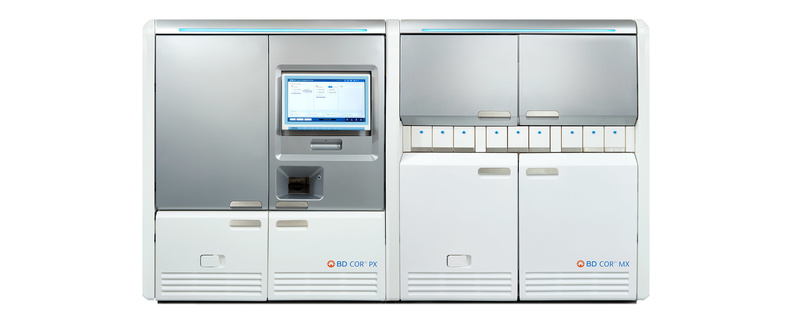They say good things happen in threes, and BD seems to be hoping that adage rings true for its Cor molecular diagnostic platform.
Two years after the automated lab-testing system made its European debut, BD snagged another CE mark for the third and final instrument to be added to the platform.
The new MX instrument performs high-throughput molecular testing for infectious diseases. It’s built off the BD MAX real-time PCR technology platform, which offers assays for staph infections, Clostridioides difficile, sexually transmitted infections and more—all of which will be used as a blueprint for the MX instrument’s own menu of tests.
The instrument’s first diagnostic, which received a CE mark of its own, can test for three of the most common nonviral STIs at once: Chlamydia trachomatis, Neisseria gonorrhoeae and Trichomonas vaginalis.
The MX tool joins the PX and GX instruments on the Cor platform. The former automates pre-analytical processes to prepare and deliver diagnostic samples for testing, while the GX module is designed solely to run the FDA-approved BD Onclarity extended genotyping assay for HPV infections.
When equipped with both the MX and PX instruments, the Cor system can take on 1,700 specimens and enough reagents and samples to perform more than six hours of automated processing time. The platform can return up to 1,000 diagnostic results in the span of just 24 hours.
With the help of robotics and sample management software algorithms, the system is able to work almost completely independently, hugely cutting down on the amount of hands-on time required from lab and hospital workers.
“The BD Cor PX/GX system is already used at laboratories across Europe and in Israel, helping to improve diagnostics and positively impact patient care,” said Nikos Pavlidis, BD’s vice president of molecular diagnostics. “The availability of the MX instrument expands the use of the platform and automates testing for an expanding list of high-demand, essential assays for women’s health and STI testing using multiplex PCR assay design, starting with BD’s CTGCTV2 test.”
The original version of the platform, comprising the PX and GX systems and designed to automate high-throughput HPV testing for both centralized labs and acute hospital settings, was originally cleared in the EU in 2019.
It wasn’t until August of this year that the platform reeled in FDA clearance and began its subsequent U.S. rollout; the new MX module has yet to score a stateside clearance of its own.

